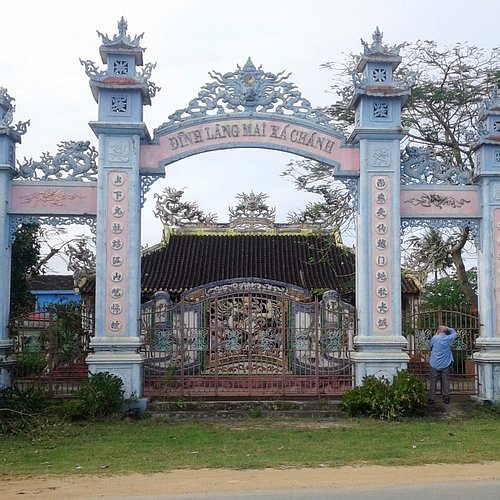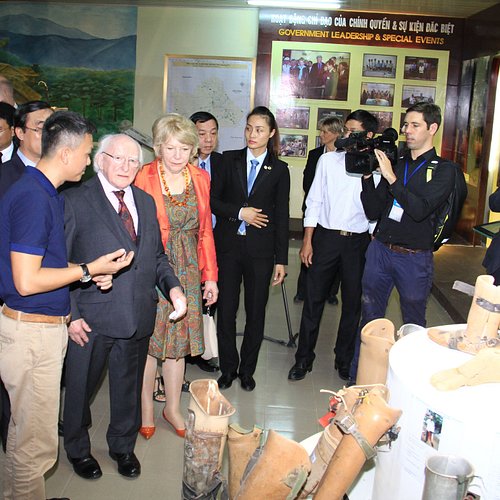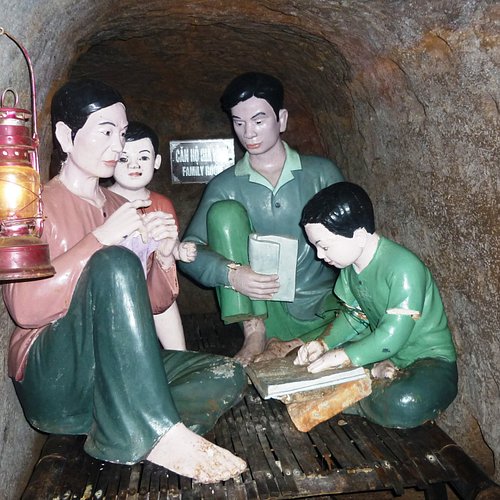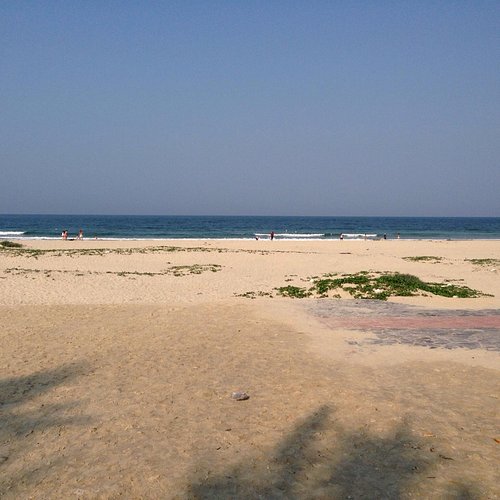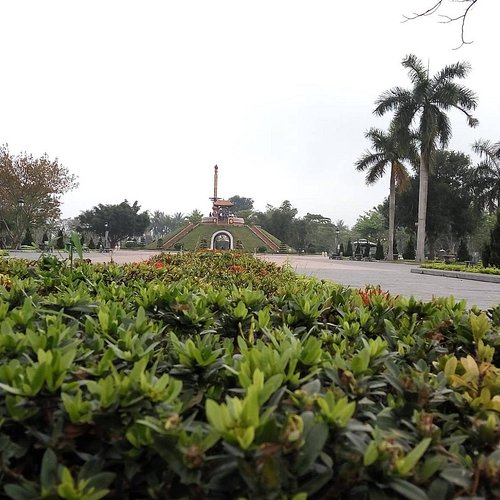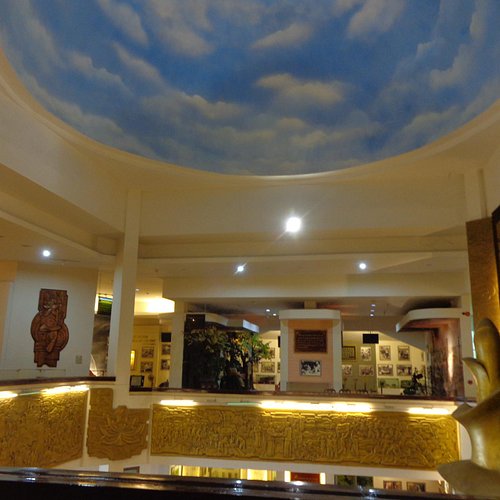What to do and see in Quang Tri Province, Quang Tri Province: The Best Things to do
Discover the best top things to do in Quang Tri Province, Vietnam including Mai Xa Village, Mine Action Visitor Center, Vinh Moc Tunnel, Cua Viet Beach, Quang Tri Citadel, Quang Tri Museum, La Vang Church, Khe Sanh Combat Base, Con Co Island, Mui Treo.
Restaurants in Quang Tri Province
1. Mai Xa Village
2. Mine Action Visitor Center
Overall Ratings
4.5 based on 61 reviews
Located in Dong Ha City, Quang Tri Province, Vietnam with easy access for tourist buses, the Center serves as an ideal quick-stop for international and national DMZ visitors to refresh before continuing their journey to former areas of operations and other historic relics in Quang Tri province. Visitors to the Center will view exhibits, documentaries, images, and facts and figures that depict the fierceness of the war and its devastating impact on the land and people of Quang Tri. Tourists and students, veterans delegations and others will learn about efforts of government authorities, local residents, and international organizations to address the Explosive Remnants of War or ERW problem since the war ended. Visitors will also be provided opportunities to contribute to mine action activities that help the people and the land of Quang Tri continue on their path of recovery, after enduring many years of pain and loss from the war. The Center is open from 08:00 a.M. To 05:00 p.M. On weekdays, on weekend days, please contact in advance for visit arrangement. No admission fees will be charged.
Reviewed By dimmydat
20 percent of Vietnam is thought to be contaminated with unexploded ordinance from the US, China, Soviet Union, France, and Japan. Over 40,000 killed and 60,000 injured from 1975 - 2007. Children pick up cluster bombs because they look like balls. Scrap metal sellers and farmers are killed, and people live in fear. Orphanages are full of the victims of Agent Orange, now in the 3rd and 4th generation. Mr. Nguyen Thanh Phu, who manages the Mine Action Visitor Center took the time to explain all this to me and the work he and his team are doing together with international NGOs in clearing and disposing the ordinance, documenting and mapping incidents, and educating people in Quang Tri province on what they can do to reduce risk and stay safe. And they help the victims of Agent Orange. The goal is for Quang Tri province to be safe by 2025 and then replicate the best practices across Vietnam. If you are in the DMZ, the Mine Action Visitor Center is a must-visit.
3. Vinh Moc Tunnel
Overall Ratings
4.5 based on 357 reviews
Reviewed By Cookiewankanobi - Colombo, Sri Lanka
Since I'm not American, or Vietnamese, I didn't want to waste a whole day seeing other sites significant to the war. I just thought it's fascinating that a village went underground and wanted to see the tunnels, and the bridge connecting north and south vietnam. So, I got a private car (more expensive, but totally reasonable if you find 2 or 3 others to split with you!) So glad I went to the tunnels WITHOUT a tour company because I was able to take my sweet time and also get there in the morning before it was busy. In tour you spend maybe 40 mins. I took my time exploring all the tunnels (brought my own headlamp) and watching the documentary afterwards, looking at the museum over 3 hours or so, as well as a walk along the sea where the tunnels come out. I have to say as a solo person I got a bit scared in the tunnels as there were no other people (around 10-noon) and I went down tunnels that didn't have any lights since I had my own light. But it felt very quiet and very dark so it would have been nice to have a friend! Overall amazing feat of engineering and well worth the 2.5 hour drive from Hue. Also, it is amazingly cool and breezy in the tunnels thanks to their ventilation system so don't worry about the heat. Take your time to walk around and see the foxholes, bomb craters and museum. Bring your own light if you want to go out of the lit tunnels to explore more.
4. Cua Viet Beach
5. Quang Tri Citadel
Overall Ratings
4.5 based on 18 reviews
Quang Tri is a city in Quang Tri Province in the North Central Coast region of Vietnam. It is second of two municipalities in the province after the provincial capital Đong Ha. During the Vietnam War, when the province was the South's border with North Vietnam, it suffered a major attack in the January 1968 Tet Offensive and it was the only South Vietnamese provincial capital to be captured by th
Reviewed By HauPhucLe - Ho Chi Minh City, Vietnam
Quang Tri Citadel, - According to documents, at the beginning of Gia Long period, Quang Tri citadel was built in Tien Kien ward (Trieu Thanh - Trieu Phong), in 1809, King Gia Long moved to Thach Han commune (nowadays, belonging to Ward 2, Quang Tri town). - The citadel was initially built with soil, and in 1837 Minh Mang king rebuilt it with bricks. The citadel has a square shape, the circumference of the walls is more than 2,000 m, 4 m high, 12 m thicker underfoot, surrounded by a trench system, four corners of the citadel are four fortresses jutting out. The citadel was built in the style of Vietnam stronghold with square walls surrounded by large bricks; Adhesive by lime, molasses and some other additives in folk. There are four main gates in the east, west, south and north. - In the years 1809-1945, the Nguyen Dynasty took it as a military stronghold and an administrative headquarters. Since 1929, France has built a prison here and turned it into a place to detain those who have opposite political views. - There were big battles here during the Vietnam War in 1968 and 1972. After the citadel campaign "Spring - Summer campaign 1972", the whole citadel was almost flattened; only one door of the East was left in its original shape and several sections of citadel walls and outer ditches were covered with trenches. - In the 90s of the 20th century, the People's Committee of Quang Tri Province rebuilt the citadel to make a relic. A few sections of the city wall were restored, the four main gates were rebuilt, in the center of the cittadel was built a memorial marking 81 days and nights in 1972. The southwest corner erected a Modern house as a museum. All roads leading to the ruins and the interior of the Old Citadel are covered with cement, except for grass. Quang Tri citadel is considered by the people in the area as "Spiritual Land" because here any inch of land has bombs and blood and bones of soldiers on both sides.
6. Quang Tri Museum
Overall Ratings
4.5 based on 4 reviews
7. La Vang Church
Overall Ratings
4.0 based on 16 reviews
Reviewed By HauPhucLe - Ho Chi Minh City, Vietnam
Our Lady of La Vang pilgrimage center, - Our Lady of La Vang is the name that Vietnamese Catholics refer to the event of Mary appearing in a period when Catholicism was persecuted in Vietnam. La Vang today is a holy place and an important pilgrimage place for Vietnamese Catholics, located in Hai Lang district, Quang Tri province, Hue Archdiocese. Believers believe that Lady Mary manifested in this area in 1798. A church was built near three banyan trees, where they believed that Lady Mary appeared and was recognized as the Emirate of the Holy See by the Holy See. La Vang cathedral since 1961. - This is one of three Catholic pilgrimage centers recognized by the current Vietnamese government. - August 20, 1928, on the occasion of the La Vang Congress 9. This cathedral was restored in 1959. During the meeting on April 13, 1961, the Conference of Vietnamese Bishops (South) unanimously decided: La Vang is the National Mother Center. During the Summer War of 1972, the bombs completely destroyed the basilica, leaving only the patchy bell tower ruins. Since 1995, the bell tower and related works such as the Chapel of Our Lady (a corrugated iron roof behind the ancient tower), the Eucharistic Chapel (built in 2002), the Rosary Square, the Ritual, the Pilgrimage house ( built in 2004), 3 banyan trees (where Our Lady appeared) ... were repaired or newly built. - In 2008, the Sanctuary was granted an additional 21 hectares of land to the religious activities of the people in Quang Tri province. According to Father James Le Si Hien (pastor of La Vang Mother Center), this is the ancient land that once belonged to the church (before 1975 was 23 hectares) and now returned. - On August 15, 2012, the first stone was place to built the new Basilica. The church is in the process of construction, designed in the style of traditional Asian architecture of Vietnam, can accommodate 5,000 people.
8. Khe Sanh Combat Base
Overall Ratings
4.0 based on 130 reviews
Vietnam Discovery Tours will bring you experience about real Vietnam.
Reviewed By Dolbyebony11 - Leeds, United Kingdom
Amazing little museum, plenty to walk around and worth a visit. Has planes, helicopters, bunkers and a museum. Definately worth having a look round whilst in Khe sanh.
9. Con Co Island
10. Mui Treo
Overall Ratings
5.0 based on 1 reviews

